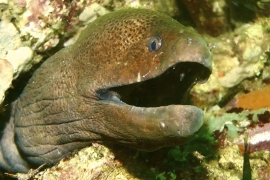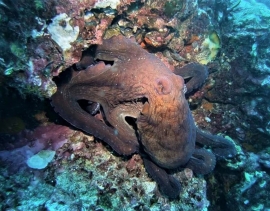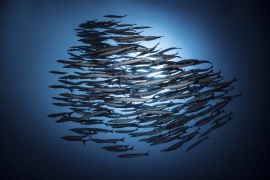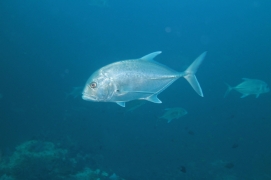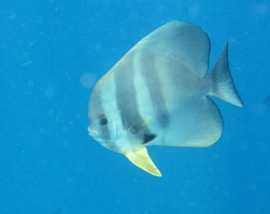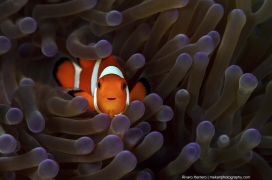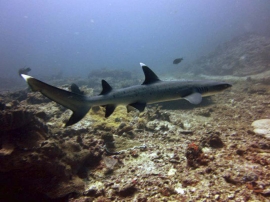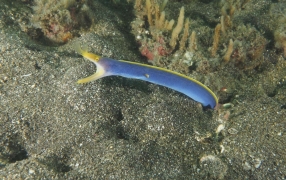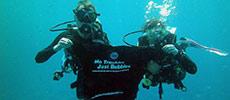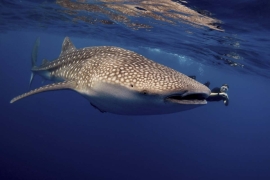
Banda Sea Liveaboard Diving
Once known as The Spice Islands, Banda Islands sit in the centre of the Banda Sea and are an extremely remote part of Indonesia. Therefore, the lack of development and pollution ensures excellent liveaboard diving opportunities. In addition, the seabed is in places several kilometres below the surface in this seismically-active region.
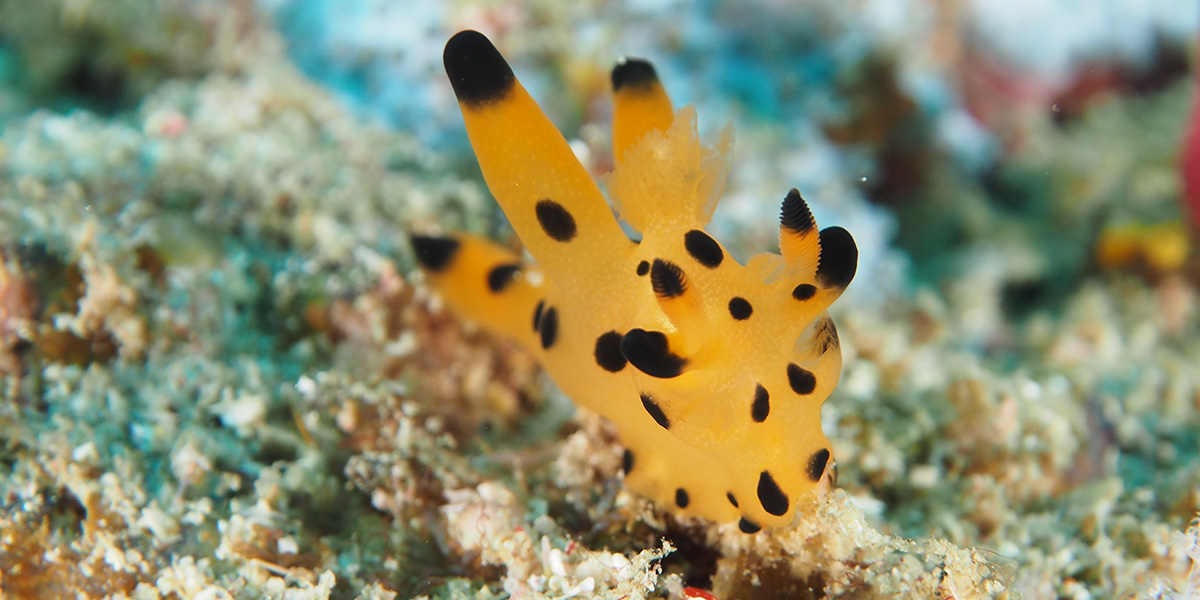
The marine life around the Banda Islands is truly remarkable, and benefits from nutrient-rich undersea currents and lots and lots of space to flourish. 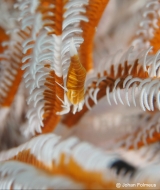 Ambon Crinoid Shrimp: Credit Johan FolmeusPelagic fish and mammals visit on their migratory routes and thousands of fish and invertebrate species call the area home. Sloping reefs, gentle and steep walls and shallow bays are accessible for liveaboard diving and snorkelling, making the area absolutely world-class. Nearby the Lucipara Atolls are where local turtles nest year after year. Although there’s never a guarantee of something big or special, large sharks and whales are commonly reported by scuba divers, fishermen, and those who spend their days on the decks of boats.
Ambon Crinoid Shrimp: Credit Johan FolmeusPelagic fish and mammals visit on their migratory routes and thousands of fish and invertebrate species call the area home. Sloping reefs, gentle and steep walls and shallow bays are accessible for liveaboard diving and snorkelling, making the area absolutely world-class. Nearby the Lucipara Atolls are where local turtles nest year after year. Although there’s never a guarantee of something big or special, large sharks and whales are commonly reported by scuba divers, fishermen, and those who spend their days on the decks of boats.
The most common diving around the Banda Islands is by liveaboard cruise, but there are some day trip options available as the islands’ infrastructure and popularity grow. The best times of year to scuba dive at The Banda Islands is March & April, and September to November. Diving at other times is possible, but the waves and currents can make it less enjoyable.
Conditions at Banda
When to dive at Banda
Diving at Banda Island and the surrounding area can be done all year round. But the best diving is when the liveaboard boats are passing through, which is February to April and from September to November.
What type of dive site is Banda
Banda is made up of many kinds of dive sites, from Muck Diving to Open Sea and Drift Diving. The area is huge and full of world-class dive sites. Currents can be an issue in some locations, but in the sheltered bays, there is often little or no current.
Where is Banda?
The Banda Islands are in the middle of The Banda Sea in Indonesia's Coral Triangle. The nearest place of note is Maluku on Seram Island, more than 100 kilometres to the north, and West Papua more than 320 kilometres to the northeast. Komodo is 1,200km southwest from Banda Island and Bali is 1,600 km southwest. It really is in the middle of a large expanse of deep, clear nutrient-rich sea.
How to get to Banda
Even though it’s out in the middle of nowhere, Banda’s main island (Bandaneira) has an airport which receives several domestic flights per day. Travellers can also arrive on slow public ferry or by private speedboat from Maluku, Ambon or even Sorong. But the best way to enjoy diving at Banda is on a liveaboard diving safari. Those boats that visit here usually do so while crossing from West Papua (Raja Ampat) to Alor, Maumere or Komodo, or the other way. These are usually September to November heading northeast, and from February to April, heading southwest.
Who can dive at Banda
Although some dive sites are suitable for all levels of scuba diver, in reality, it's only really suitable for advanced/experienced divers. The reason for this is that unlike somewhere like The Maldives or Bali where people go on vacation and try scuba diving, The Banda Sea and Banda Islands are out of the way, and people go there specifically to dive. Therefore, the dive centres, itineraries and buddy groups are set up for dive sites better suited to divers with at least 50 logged dives' experience.
What marine life can you see at Banda?
It's possible to see almost anything when diving in The Banda Sea, and many species here are found nowhere else on earth. Plus the chances of undescribed species being found here are greater than in any other tropical sea. From the smallest critters when Muck Diving to large pelagic species and requiem sharks, you can see it all when diving at The Banda Sea.
Summary of Banda
Diving around The Banda Sea is a very special experience. The area is very remote and surrounded by deep & healthy seas in all directions. It's in the middle of migratory routes for pelagic species, and great for Muck Diving. Its remote location makes it great, but make it more difficult and time-consuming to get there. But of course, with it being harder to reach keeps it healthy due to the lack of development and tourism-related pollution.

